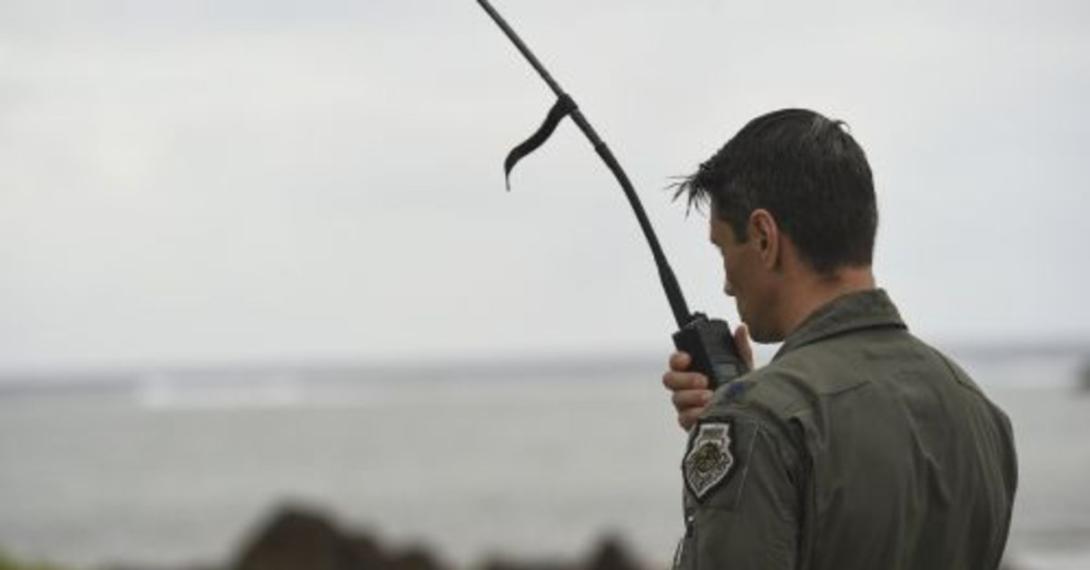DISA Adds Vital Communications Capabilities to Guam
Given the remoteness of the Indo-Pacific region and the growing role of Guam in the theater, the Defense Information Systems Agency, or DISA, has been heavily investing in information technology and communications capabilities for the U.S. territory.
The agency’s Airborne Intelligence, Surveillance and Reconnaissance (ISR) Program is supporting additional video and sensor dissemination capabilities, tactical relays, ISR ground stations and ISR network operations for the region. This ISR enterprise, which is used by the combatant commanders to make combat, rescue and other mission decisions based on the near-real-time information from the sensor network, will benefit greatly from the planned regional hub node in Guam that will support satellite links, the agency reports.
“These ground stations are the direct interface for the ISR platforms as well as the ISR tactical relay suites,” a DISA spokesperson stated. “The ground stations are the strategic interface to the backbone the Defense Information System Network (DISN) uses to interconnect into the Unified Video Dissemination System. And these ISR ground stations support multiple theatres and regions. DISA will continue to work with each combatant command to their operational posture and ability to act and react to global events as necessary.”
In preparation for the next round of joint all-domain command and control (JADC2) experimentation during the Indo-Pacific-based large-scale exercises Northern Edge 21 and Talisman Saber 21, the agency is supporting the related communications and information technology requirements through its Pacific Contingency/Exercise Branch. The branch is facilitating the development and submission of satellite and ground access requests required to establish satellite communications for the JADC2 experimentation.
DISA is continuing to modernize and build out the communications transport infrastructure in Guam. The agency currently is installing and operationalizing a third pair of multiprotocol label switching (MPLS) nodes at Naval Base Guam. The agency already built the other two pair of MPLS nodes at the Naval Computer and Telecommunications Station Finegayan and at Andersen Air Force Base.
“The DISN MPLS network offers our mission partners more capacity, resiliency and availability, with the third node providing additional diversity on and off island,” the agency indicates.
In addition, the agency is working to modernize and expand the satellite communications infrastructure for Finegayan, an effort that when completed will provide the U.S. Indo-Pacific Command with a third large satellite communications gateway, adding key bandwidth and redundancy capabilities.
DISA Pacific is conducting a pilot program to test an enterprise voice-over Internet protocol (EVoIP) between Guam mission partners and DISA Pacific. “The pilot will allow Guam military and civilian personnel to take advantage of IP phones interconnected to DISA’s IP transport to increase redundancy, standardization and reducing operational cost,” a DISA spokesperson explains.
The agency also is boosting the bandwidth capacity to the island from the Western Pacific, Hawaii and the continental United States. These bandwidth upgrades are coming in the form of new wireless and voice-over-Internet protocol (VoIP) technologies. In addition, DISA is planning to deploy optical transport system and optical transport network capabilities to increase the bandwidth capacity.
“DISA Pacific made vast strides towards expanding the DISN transport infrastructure in the Indo-Pacific Command Theater by activating the multiservice provisioning platform devices and trunks,” the agency states. “By activating these trunks, there was a bandwidth increase of over 20 gigabytes per second. This transformed the legacy transport infrastructure by replacing legacy capabilities with a modernized Internet protocol DISN architecture that maximizes the protection, situational awareness and lethality for the warfighters.”
The agency indicates that it will continue to improve the operational readiness for U.S. warfighters by leveraging “every opportunity” to increase capacity and availability of DISN services.





Comments